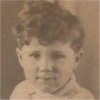 | Name: Allan Jones
Overview: Allan Jones` father was a miner with six children. They had little money but had to pay for insulin and equipment until the National Health Service was created in 1948. They couldn`t afford cotton wool and re-used needles until they were blunt. When Allan was 15 he got a job as a messenger on the railways but had to pass a medical before being promoted. He feared he would lose his job if his diabetes was discovered, so took with him a sample of his brother`s urine! He passed the medical and worked happily on the railways for 30 years.
Hits=3 |
|
| 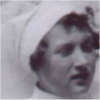 | Name: Monica Winn
Overview: Monica Winn was the only child of a naval officer and grand-daughter of a doctor who diagnosed her diabetes only 4 years after insulin was first manufactured in England. She nearly died of pneumonia; had bronchitis every winter; spent much time in bed and never attended school. Her parents were told she wouldn`t live beyond 14 and she was told that she wouldn`t have children. She had a daughter in 1945 and recorded this interview when she was nearly 86. She is very fit and copes well with slight memory loss after a series of mini-strokes.
Hits=2 |
|
| 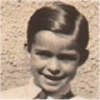 | Name: Richard Fawkes
Overview: Richard Fawkes` father worked as a railway engineer in Argentina and Richard was brought up in an expatriate British community. His father died during the war, and he returned to England in 1945 to work in the family firm. He shared a house with his mother and sister for many years, but has lived alone since 1980. He has sung in amateur musicals, renovated houses, including the one in which he now lives, and painted 1,600 paintings, most of which he has sold. He is currently recovering from a heart attack.
Hits=2 |
|
| 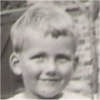 | Name: Francis Andrews
Overview: Dr. the Rev. Francis Andrews was diagnosed with diabetes on the day that war was declared in September 1939. He was the son of a doctor who`d worked as a medical officer in Flanders during the First World War. Francis also trained to be a doctor, and eventually became a consultant physician in rheumatology, having been advised not to specialise in diabetes. He married and has 6 children, 15 grandchildren and 1 great-grandchild, none of whom have diabetes. He took early retirement to train as a Catholic priest, and was ordained in 1994.
Hits=2 |
|
|
 | Name: Joe Needoff
Overview: : Dr. Joe Needoff was a GP in an old-established Black Country practice from 1951 to 1989. He had a few, mainly elderly, patients with diabetes, but issued very few prescriptions for insulin and never saw a young person with diabetes. At first he had no nurse to help him, so did urine tests himself and, when he needed a chaperone, he called on his wife or another patient. The waiting-room was often crowded, as there was no appointment system. He saw no increase in diabetes throughout his career and had no diabetic clinic: ‘there was no necessity for it.`
There is also an interview with another Black Country GP, from one generation later, Dr. Richard Gee.
Hits=2 |
|
| 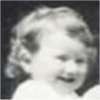 | Name: Joy
Overview: Joy was born seven years after her mother was diagnosed with Type 1 diabetes and from a young age took considerable responsibility for managing her mother`s care. Her aunt and two uncles also had diabetes, so Joy grew up thinking it was not unusual for people to test their urine, measure their carbohydrate intake and eat meals at precise times. She trained as a dietitian from 1967 to 1971 and has always specialised in diabetes. She has worked as a District Chief Dietitian in Surrey for over twenty years.
Hits=1 |
|
|
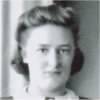 | Name: June
Overview: June`s husband, Charles, was diagnosed with diabetes at Barnstaple Hospital in 1935, when he was ten. After leaving hospital, he didn`t return for a check-up until 1957. He missed two years of school, as it was too far to walk and he had to look after his own injections, urine tests and diet, because his mother had seven other children. After June married Charles in 1946, his diabetes made little impact on their lives. He disliked blood testing and did urine tests until around 2004, when June did blood tests for him. June developed Type 2 diabetes twelve years ago.
Hits=1 |
|
| 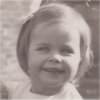 | Name: Joan B
Overview: Joan began to lose weight when she was three. Her doctor had never seen a child with diabetes and so failed to act until she was critically ill. When she recovered, she had to weigh every slice of bread, but was allowed extra wartime rations of cheese, meat and fish. She has been married to Clive since 1962 and has one son. She would like to have worked as a children`s nurse, but was advised that she wasn`t fit enough, and she was would like to have had more children, but had three miscarriages, which she attributes to diabetes.
There is also an interview with Joan`s husband, Clive.
Hits=1 |
|
|
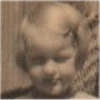 | Name: Margaret Elliott
Overview: Margaret Elliott`s newly-qualified local doctor diagnosed diabetes as soon as he walked through her front door - from the smell of acetone. Her family was poor but managed to pay for some medical care through a thrift club. Her parents did her injections for her and her husband did them after she married at 20. She was advised not to have children, but had 3 normal births and one caesarean. She attributes her good health to her husband`s care and a very strict diet. She has smoked 6 or 7 cigarettes a day since she was 14.
Hits=1 |
|
| 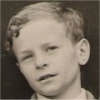 | Name: Philip
Overview: Philip was diagnosed aged 9 and considers that it`s better to get diabetes young, when the body is more adaptable. He attended a grammar school, and regrets that he often used diabetes as an excuse to miss school. He left at 16, but acquired more qualifications later and became a successful accountant. His diabetes was well controlled and caused little trouble for most of his life, until he began to get early morning hypos a few years ago. (He finds the term `hypo` unhelpful, since it`s used to refer to anything from a mild sensation to complete unconsciousness.)
Hits=1 |
|
|
| Search returned 16 matches |